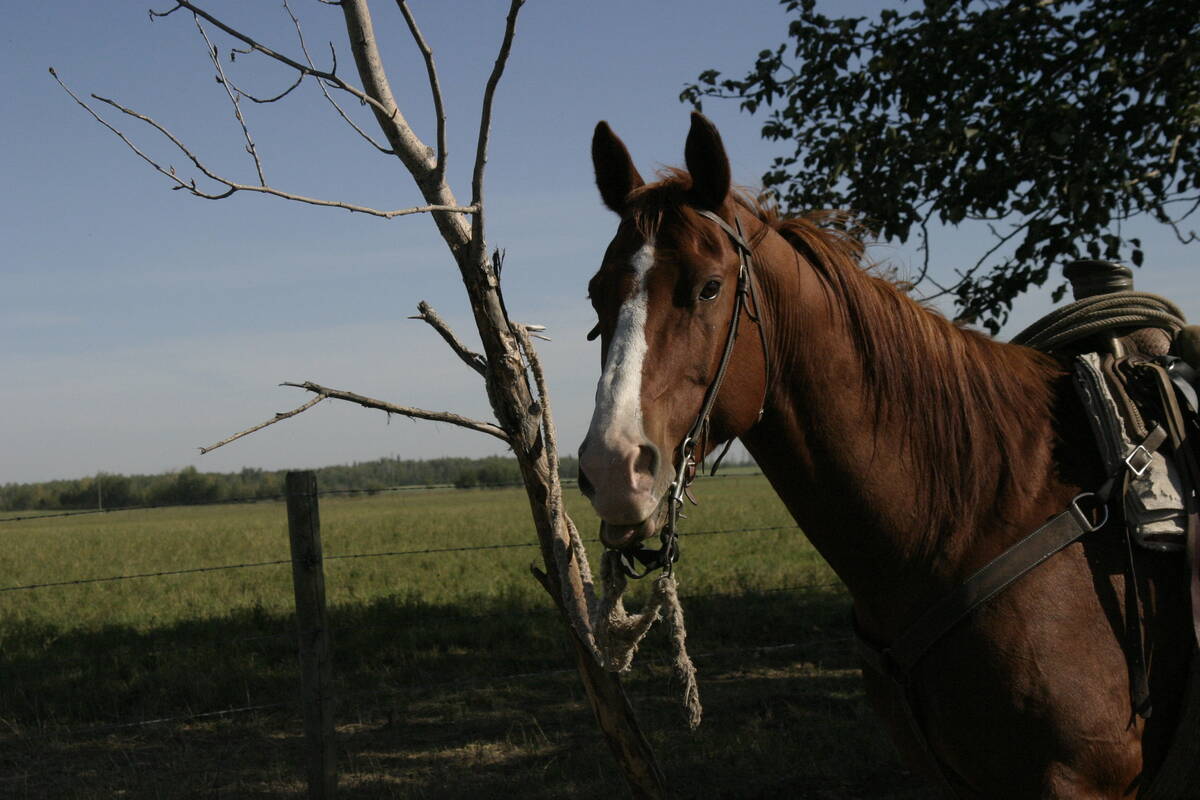BANFF, Alta. – Tighter meat supplies may signal better prices for livestock producers, but cash strapped consumers may balk at paying more at the retail counter.
People buy more high-end cuts when times are good, says Ron Plain, an agricultural economist with the University of Missouri-Columbia.
However, they switch to products such as bologna, ground meat and pasta as the economy flounders.
A 10 percent unemployment rate in the United States means meat demand could remain stagnant.
Too much pork, a recession, high feed costs and fears caused by H1N1 influenza weakened pork demand and market prices.
Read Also

Horses challenged when asked to be weekend warriors
Horses are creatures of consistency. Their bodies and nervous systems are designed for steady, rhythmic movement, low-intensity grazing and regular social interaction.
Plain believes a return to profitability is possible in 2011, but producers will have to manage costs such as high priced feed grain.
“Don’t just look at the market price of hogs. Look at what you have to do with feed costs,” he said Jan. 19 during the Banff Pork Seminar.
North American hog producers lost more $7 billion in 2008 and 2009 and subsequently reduced production at the same time that corn prices soared.
Weather related yield fluctuations and demand from livestock for feed have historically driven corn prices.
However, Plain said a rapidly expanding ethanol industry is responsible for volatile corn markets because it doubled corn prices and drove up the cost of producing slaughter hogs by 50 percent.
Thirty-nine percent of the U.S. corn crop will be used to make ethanol this year, so prices will remain strong.
Corn prices were less than $2 per bushel in Omaha, Nebraska, in early September 2006 but rose to more than $7 in the summer of 2008.
Omaha corn has pushed close to $6 this year.
“We need to produce a record crop every year or prices will go higher,” he said.
Plain said the breakeven price for U.S. slaughter hogs in 2011 is likely to average close to 60 cents per pound of live weight. International trade in pork and live hogs is important to U.S. and Canadian producers, so what happens to exchange rates has a major impact on profitability.
The Canadian hog industry prospered when the dollar was low, but a strengthening loonie devalued hog and pork exports and caused hardship for Canadian producers.
However, the U.S. Department of Agriculture predicts Canada will export 68 percent of its pork production in 2011. It estimates live shipments to the United States were 5.5 million head last year.
Breeding herds in both countries are lower in response to faltering market conditions, with the Canadian sow herd down nearly four percent from 2009 and the U.S. herd down nearly two percent.
Plain is forecasting a slight increase in U.S. hog slaughter but a further decline in Canadian slaughter.
A drop in Canadian hog production would have a bigger impact on live exports than on hog slaughter.
———
Brandt Positioning Technology Division is your ideal partner for effective and productive land management throughout the farming cycle. With a full lineup of Topcon precision agriculture products, you can increase efficiency, improve yields, and reduce input and fuel costs -easier than ever before.
To further support your operation, the Brandtnet GNSS RTK Network provides real-time correction services within a 50km radius of our base stations –which guarantees ease of operation, and reduced equipment and operating costs.That’s powerful value, delivered.















